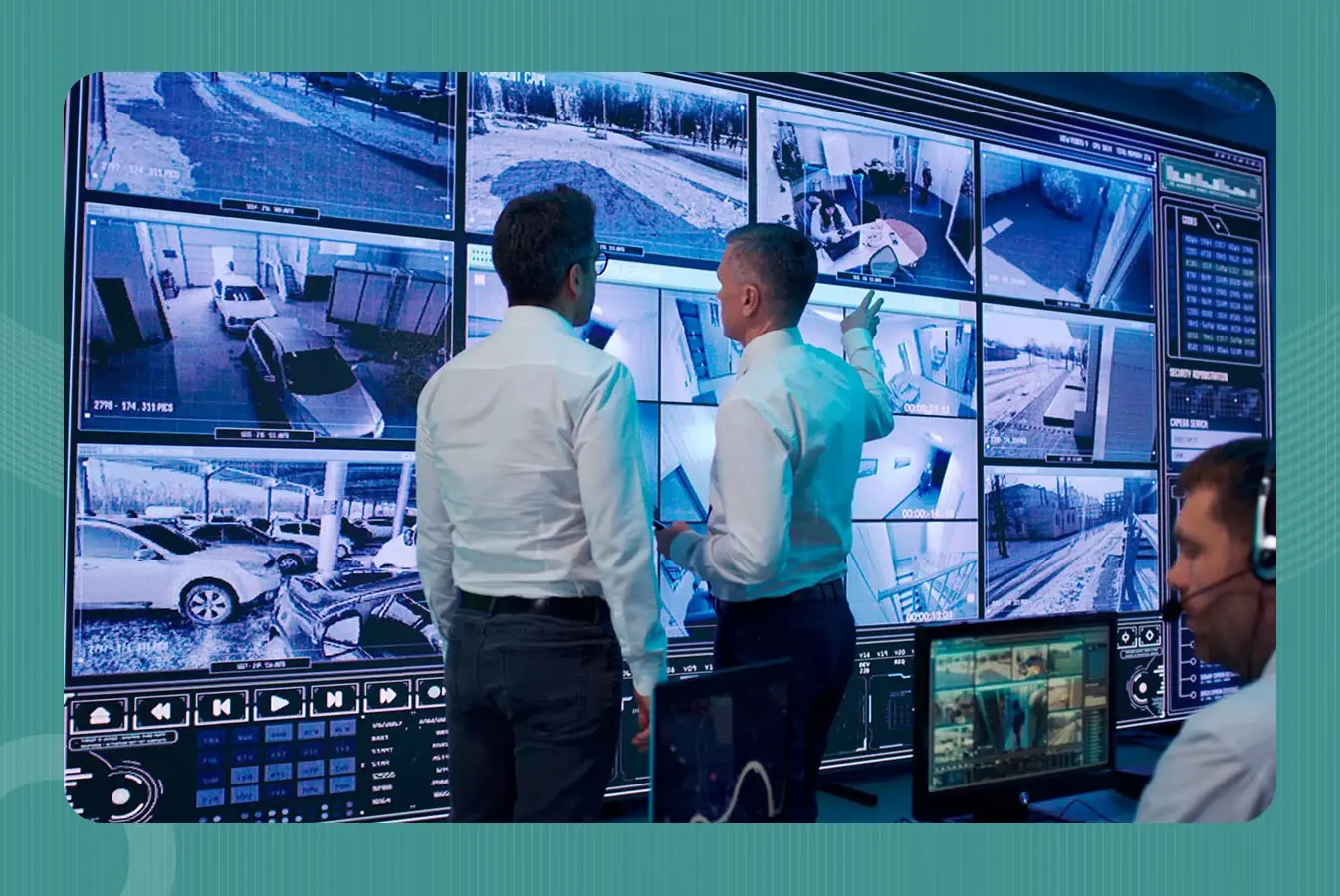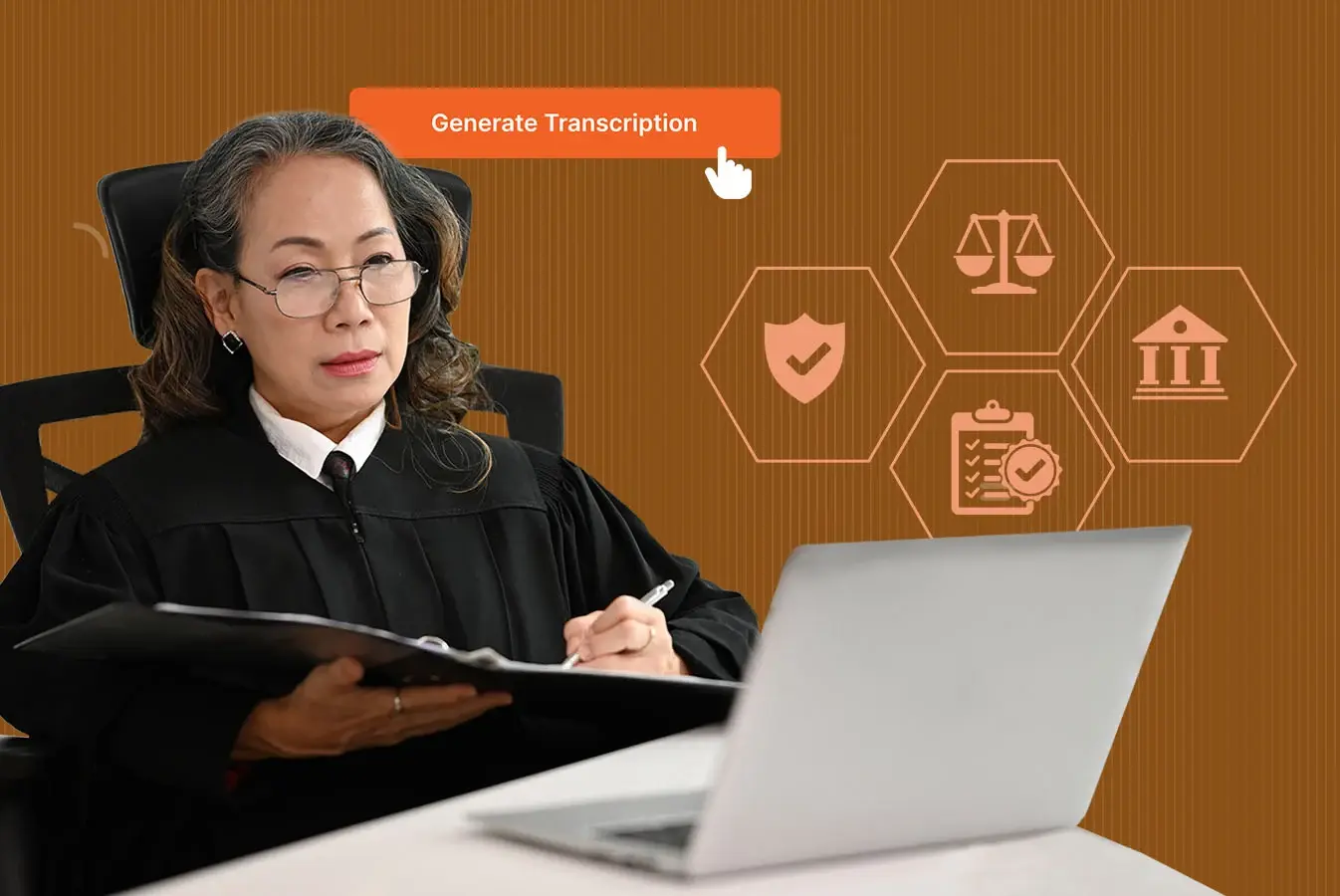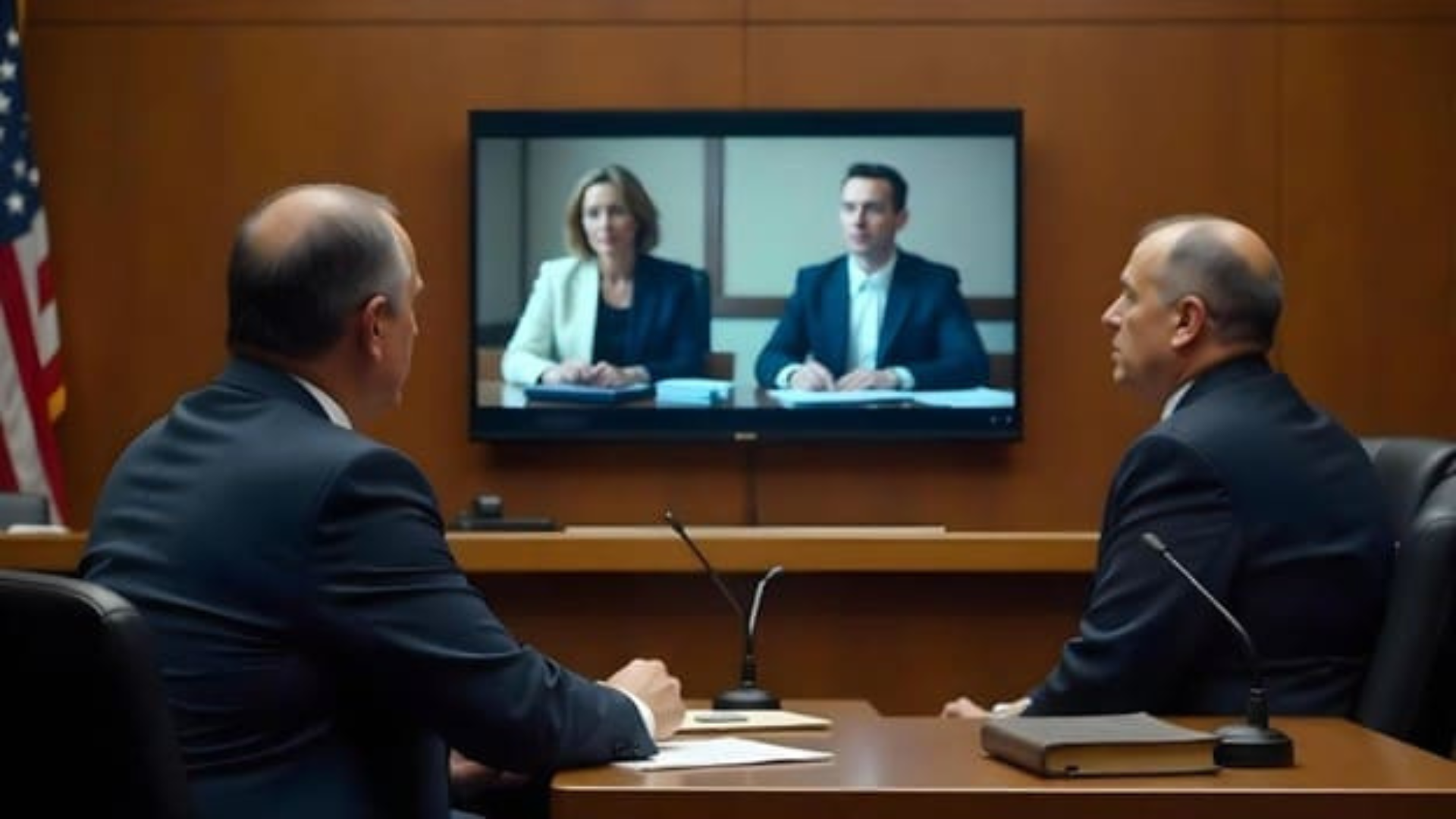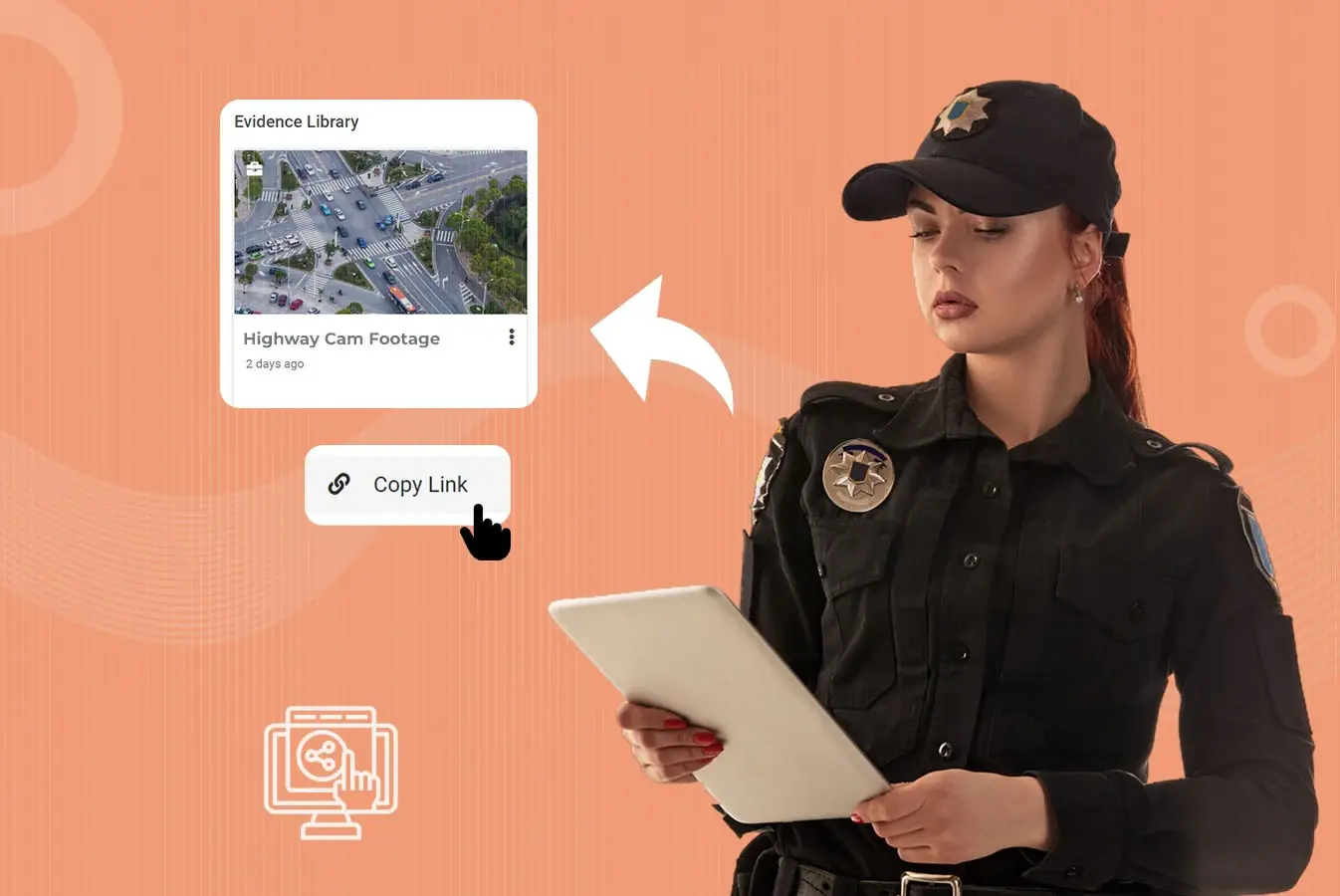Why RMS for Police is Not Fit for Evidence Management?
by VIDIZMO Team, Last updated: June 4, 2025, Code:

Technology has impacted everyone in how we work, communicate, and solve problems. Government agencies such as legal and police departments are no strangers to it. However, with changing times, digital evidence is evolving, and old RMS systems cannot keep up with various digital files.
It becomes necessary to either enhance or replace prevailing legacy systems to efficiently manage audio, video and image evidence, reduce backlogs, and switch from handling files in various disparate physical locations such as CDs, hard drives, tapes, USBs etc.
As criminal cases pile up, investigators, officers, district and defense attorneys, paralegals, and analysts must equip themselves with the technology to manage and process large volumes of evidence which the RMS is not designed for.
What is the purpose of an RMS?
Record Management Systems, or RMS for short, are broadly used for compliance purposes that provide storage, retention, retrieval, and viewing of information, documents and files related to legal and police operations. The International Organization for Standardization (ISO) via ISO 15489-1:2016 provides a framework for a comprehensive records management program.
For one, it is a requirement for many governmental agencies. As far as law enforcement operations are concerned, record management systems (RMS) are used to handle police incident and accident reports, warrants, arrests, case management, field interview reports, photo lineup, supplemental reports and more.

The benefit of using the RMS comes in the initial stages of the police investigations. It ensures that records of financial, historical, or legal value are adequately maintained and to discard non-essential records as per established guidelines.
Traditional records management systems are rigid in structure, with minimum changes between one case or report. To make greater use of current technology without spending any extra funds, police departments use it for handling and analyzing evidence. This is where the problem arises.
New Evidence Brings a New Set of Challenges
Whether dealing with records or evidence, personnel should understand that there is no one-size-fits-all solution. While RMS vendors are looking for opportunities to fill the gaps of customers and expand their services, managing evidence presents its challenges. As crimes are evolving, so too are the types of associated evidence.
RMS was built before video and image-based evidence became the norm in police investigations and criminal proceedings. While it may successfully manage text-based evidence, record management systems are not designed to process and analyze videos containing hours of footage.
Videos can come from dashcams, body-worn cams, CCTV surveillance, drone cams, smartphones, and more with various formats which may require codecs to play them.

Adding to the police department’s plight are the FOIA requirements to redact and share videos to meet public disclosure requests in time.
Further causing headaches from the lack of advanced RMS functions are the transcription requirements, leaving police users in a dilemma between spending more time on their investigations and engaging in administrative processes such as manually reviewing and typing transcriptions from hours of footage; that too with risks of human-prone errors.
Aside from manual hours spent, police departments also must budget for video storage, redaction, and transcription technology to complement their current RMS.
One instance is the NYPD charging a cable news channel $36,000 (or $120/hour) for 190 hours of footage requested through New York’s Freedom of Information Law (FOIA) to offset the operating costs of the police departments.
During court trials, juries expect attorneys like prosecutors and public defenders to present videos to them in every case. Hence, they must have the understanding to present them in court.
Enhance your Police RMS capabilities with DEMS
By integrating your Record Management System (RMS) with a Digital Evidence Management System (DEMS), you can not only speed up your administrative workflows with a sophisticated AI running in the background, but you can also link previously held records of suspects, vehicles, properties and other information with audio, video and image-based evidence.
Extracting video insights allows users to connect the dots and solve police investigations faster, rather than solely relying on RMS technology and missing out on crucial information not found in documents.
Poor evidence management practices, whether through the inability to retrieve the proper evidence at the right time or having evidence misplaced, can lead to disastrous consequences. In addition to evidence management policies, there should be an easy-to-use system with a trained staff that understands the system.
DEMS and RMS can go hand in hand and make processes more effective. Enhance user’s productivity by smartly organizing random files with machine-generated labels called auto tags, drastically cut review time by making redaction workflows seamless, and prepare transcriptions in a matter of minutes.
You can monitor each user activity and system operations with the chain of custody and audit trail.
Video-based evidence management requires the training needed to present the proper evidence for court submissions because not all video evidence can be considered admissible in court.
Centralized Access with VIDIZMO
VIDIZMO DEMS is a comprehensive solution that streamlines the digital evidence workflows.
It optimizes RMS capabilities from securely managing and storing to analyzing and disposing of audio, video, image and document evidence, helping police users, legal attorneys, and law enforcement investigators deliver swift justice.
The system is compatible with numerous video formats captured from dashcams, body-worn cams, CCTV surveillance, drone cams, smartphones, saving precious time from dealing with separate codecs and software.
Perform rapid redactions within videos through automatic detection and tracking of faces and bodies to save precious time and costs by hiding Personally Identifiable Information (PII) of witnesses, minors and innocent bystanders and meet privacy requirements as per GDPR and other region-specific data privacy laws.
VIDIZMO’s robust Artificial Intelligence converts spoken words from audiovisual evidence to text through transcription and translation, prepared in a matter of minutes. By searching inside the video, you can extract actionable insights from automatically detected faces, objects and using transcriptions to make spoken words searchable to find critical information without going through the entire footage.
When it comes to sharing videos, create multiple link versions to the files so you can decide from a single video file who can edit the files, view a certain number of times, or have limited time to access them.
It also provides flexible deployment options like public cloud, private cloud, on-premises storage, and hybrid, depending on the risk-averseness of the agency. These options comply with the Criminal Justice Information System (CJIS), FedRAMP, and other compliance regulations.
Why RMS Alone Is Not Enough for Digital Evidence Management
While Records Management Systems (RMS) play an essential role in documenting incidents and maintaining structured police records, they fall short when tasked with handling modern digital evidence management. RMS was never designed to manage complex, high-volume multimedia files like video, audio, and images that law enforcement now collects from body-worn cameras, drones, smartphones, and CCTV footage.
These evolving forms of digital evidence require features RMS cannot offer—like automatic redaction, transcription, video analysis, codec support, and role-based access. As a result, relying solely on RMS can create bottlenecks in investigations, increase costs, and risk mishandling or losing critical evidence.
This is where VIDIZMO DEMS offers a superior alternative. By integrating seamlessly with RMS, VIDIZMO transforms your existing workflows by automating time-consuming tasks like transcription and redaction, maintaining a secure chain of custody, and enabling advanced evidence search. Start your free trial of VIDIZMO DEMS today or explore our AI-driven evidence management solutions to take control of your digital evidence strategy.
People Also Ask
Why is RMS not suitable for digital evidence management?
RMS was built to manage structured data and documents, not complex digital media. It lacks support for video formats, transcription, redaction, and chain of custody tracking essential for handling modern digital evidence.
Can RMS handle video and audio evidence efficiently?
No, traditional RMS cannot efficiently manage large multimedia files such as bodycam footage or surveillance videos, which require additional tools for playback, redaction, and analysis.
What are the risks of using RMS for evidence storage?
Using RMS for evidence storage can lead to poor organization, difficulty retrieving files, lack of compliance, and vulnerability to tampering, all of which can jeopardize legal proceedings.
What’s the difference between RMS and DEMS?
RMS focuses on police reports and administrative records, while DEMS specializes in ingesting, analyzing, securing, and sharing digital media evidence like video, audio, and images.
Can RMS be integrated with a DEMS system?
Yes, integrating RMS with a DEMS system like VIDIZMO enhances overall capabilities by linking reports with relevant multimedia evidence, creating a unified and efficient investigation process.
Does VIDIZMO DEMS support chain of custody tracking?
Yes, VIDIZMO DEMS maintains a complete audit trail and chain of custody for every file to ensure evidentiary integrity and admissibility in court.
How does DEMS help with FOIA and public disclosure requests?
DEMS automates redaction and access control, making it easier to meet Freedom of Information Act (FOIA) and privacy compliance without manual effort or risk of data exposure.
What redaction features are available in DEMS?
VIDIZMO DEMS offers AI-powered redaction to automatically detect and blur faces, license plates, and other PII in videos and images, helping law enforcement meet privacy laws like GDPR.
Can DEMS support different types of digital evidence formats?
Yes, DEMS supports a wide range of media formats from various devices such as dashcams, bodycams, CCTV, smartphones, and drones—eliminating the need for additional codecs or players.
What deployment options does VIDIZMO DEMS offer?
VIDIZMO DEMS offers flexible deployment in public or private cloud, on-premises, or hybrid environments, and complies with CJIS, FedRAMP, GDPR, and other legal frameworks.
Jump to
You May Also Like
These Related Stories

Top 4 Reasons Law Enforcement Agencies Need Legal Transcription In 2025

Using Digital Evidence Management System to Present Video Evidence in Court



No Comments Yet
Let us know what you think